The birds that are in hospital here are the canaries in the coalmine for us. They are the ones telling us that there is something wrong going on in their wider environment.
Brett Gartrell, Massey University
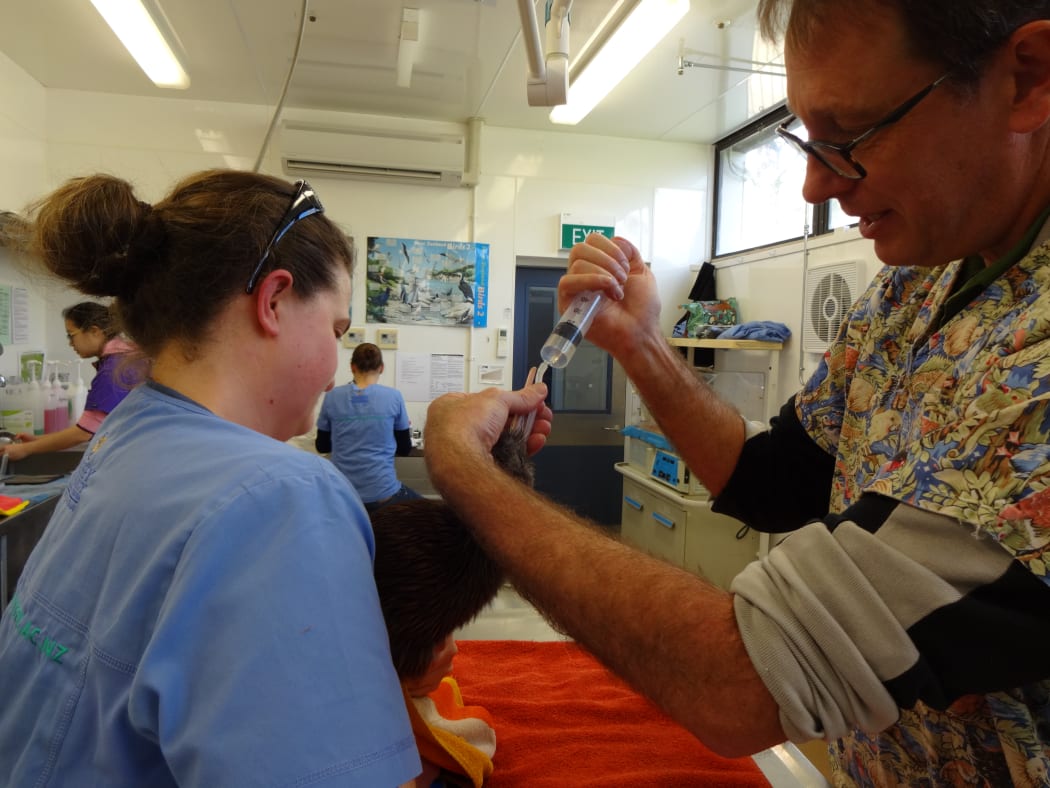
Resident vet Megan Jolly and Wildbase director Brett Gartrell are treating an injured kiwi. Photo: Veronika Meduna / RNZ
Vets at Massey University’s Wildbase hospital, New Zealand’s only dedicated wildlife hospital, see about 300 patients each year. Most arrive as trauma victims following cat attacks, window strikes and collisions with cars. The vets’ job is to help their patients to return to the wild as quickly as possible, but the animals' injuries and diseases are sometimes also indicative of wider issues and become the starting point for research projects.
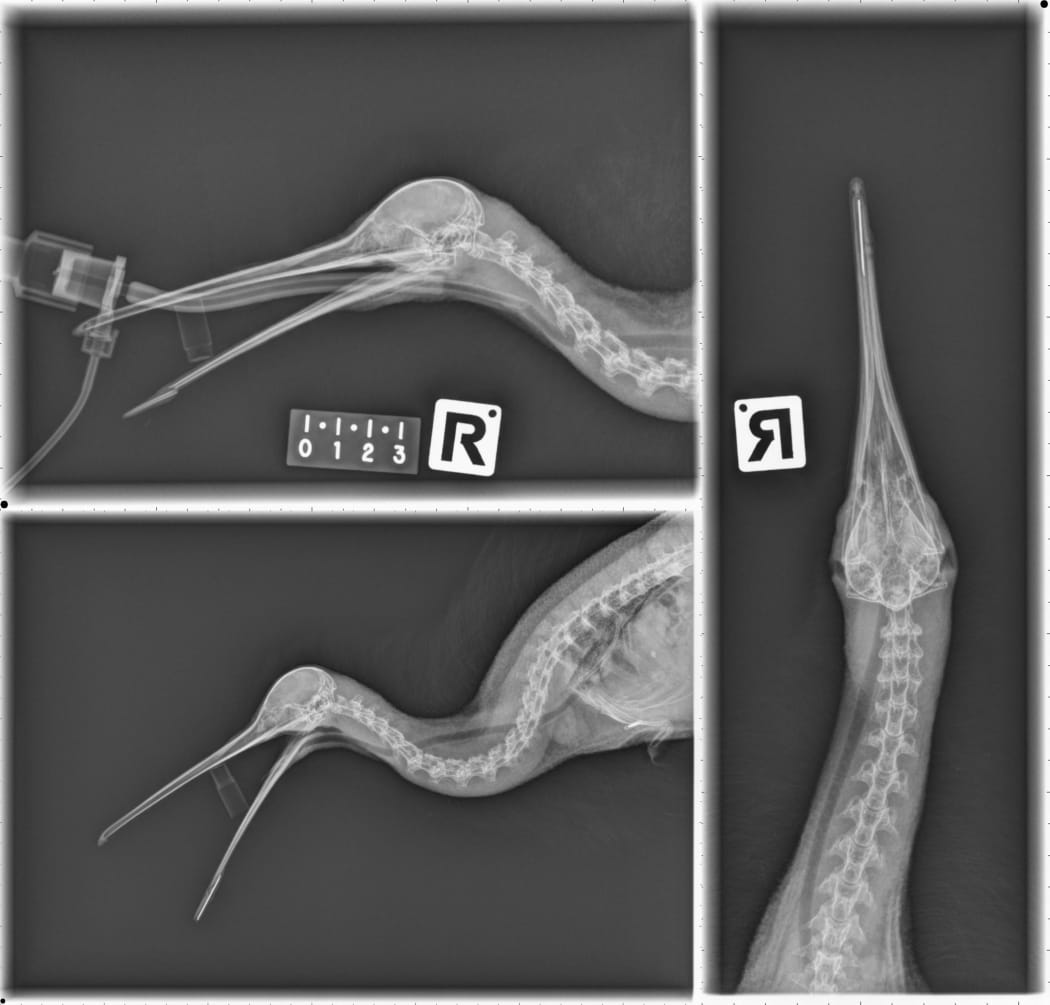
These X-ray images show how the Wildbase vets used a hypodermic needle as a splint to fix the kiwi's broken bill tip. Photo: Brett Gartrell / Wildbase hospital
Wildbase director Brett Gartrell says operating on wildlife sometimes requires innovation and creativity, such as the use of a hypodermic needle and nail acrylic to fix a kiwi’s cracked bill tip.
“Kiwi do injure their bill quite a bit because they are probing around and looking in crevices and cracks.”
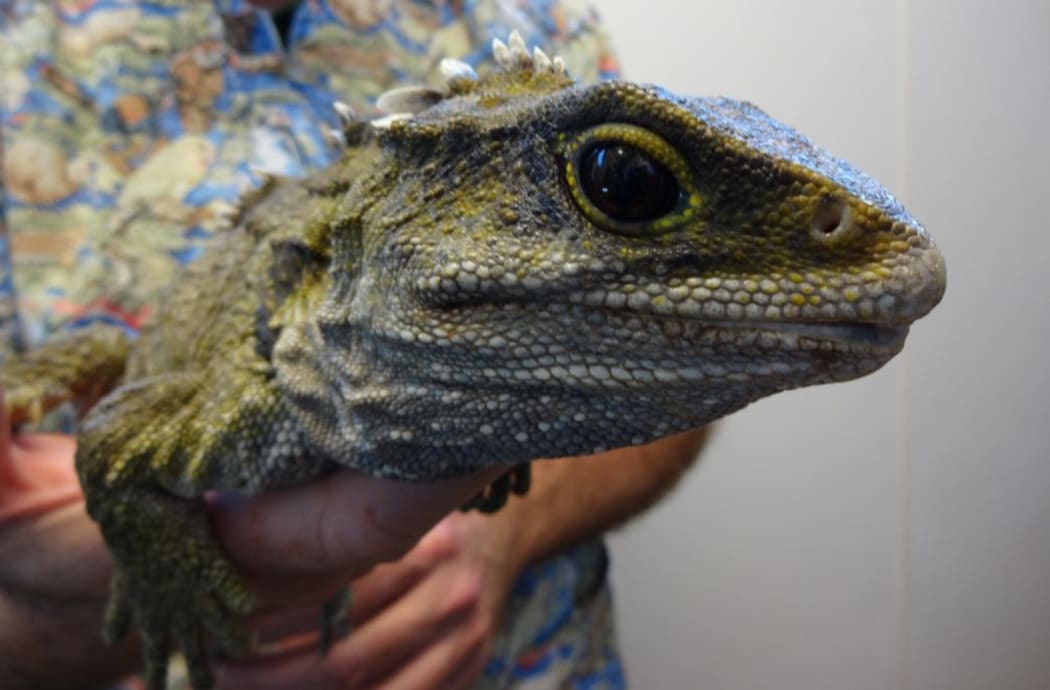
This tuatara arrived at the Wildbase hospital emaciated and full of parasites, but has now recovered and is awaiting its release back into the wild. Photo: Veronika Meduna / RNZ
This big, male tuatara (above) was part of a translocation from Stevens Island, at the northern tip of the Marlborough Sounds, to the Cape Kidnappers sanctuary. Brett Gartrell says the tuatara was in a pen with many others, waiting to be released, but was outcompeted. “When he arrived, he was nothing but skin and bone. He’s been with us for a couple of months now. He was full of parasites, so as his body condition deteriorated, the parasite load increased.”
While the patient has now fully recovered, he will stay at the hospital until spring temperatures are warm enough for his release to stop him from going into a winter torpor. The reptile’s condition is also of interest for the team as part of a research project to study the possible impacts of climate change.
Stephanie Price, at Victoria University, is using translocations to places such as the Cape Kidnappers sanctuary, which is warmer than Stevens Island, to study how warmer temperatures influence the sex ratio of offspring and the general health of the populations. The ancient reptiles lay their eggs into a nest they dig into the ground. The temperature during incubation controls the sex of the hatchlings – with warmer temperatures producing more males. But warmer conditions could also provide an advantage for parasites.
Our previous research has shown that tuatara are very resistant to salmonella, unlike other reptiles. But in the move we have actually had a couple of the tuatara develop salmonella infections. It might be that in the colder climate, salmonella can’t get a foothold but as the tuatara are warming up, that puts them into the temperature range where the bacteria are more likely to create an infection.
That’s a worry for the future, says Brett, especially with tuatara “being left on small island reserves or mainland sanctuaries where they can’t move to adjust their temperatures”.
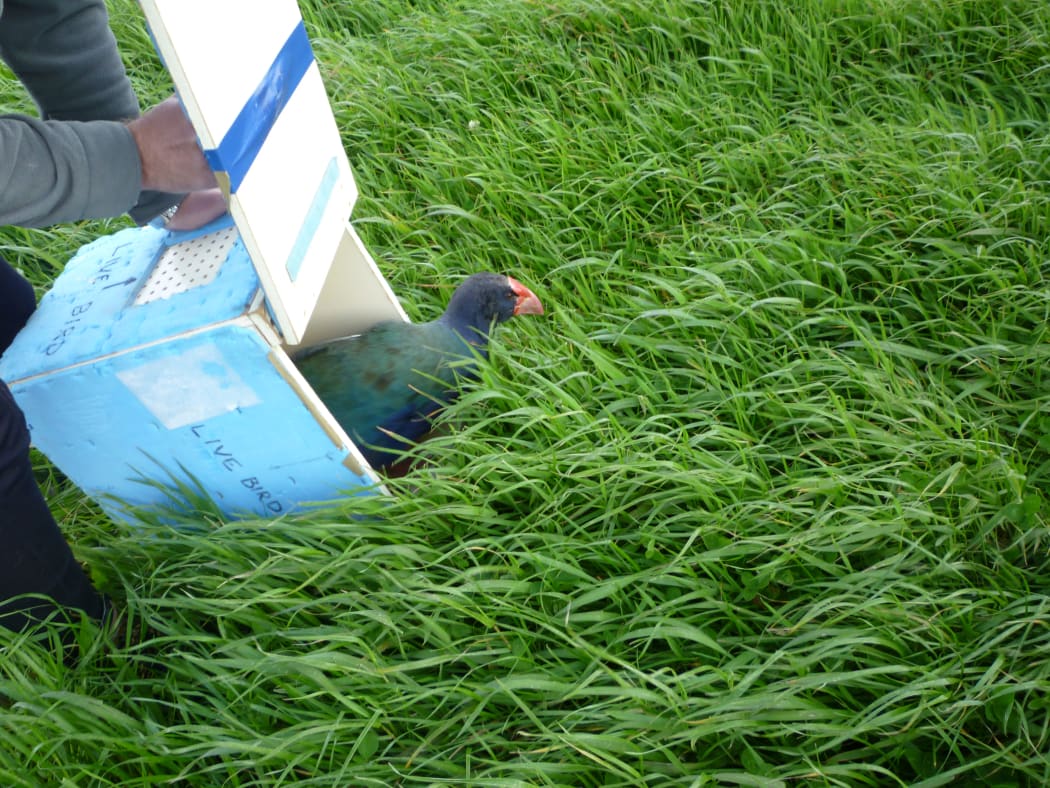
A takahe being released back into the wild. Photo: Zoe Grange
Parasite loading in native species that are going through translocations is also a research focus for resident vet Megan Jolly and postdoctoral fellow Zoe Grange – particularly in takahe.
Takahe were once thought to be extinct, but were rediscovered in 1948 in the remote Murchison Mountains in Fiordland. Even today, despite years of conservation effort, takahe remain critically endangered, with a population count of about 290 birds.
Megan studies a protozoan parasite called coccidia in takahe, which is an internal parasite that also shows up in other birds in captive breeding programmes or intense management conditions. The birds at the Burwood Bush takahe rearing unit have high counts of coccidia, and Megan says at least one takahe death is suspected to have been the result of high parasite loads.
Zoe’s focus is on two bacterial pathogens – salmonella and campylobacter. “We’ve collected samples to investigate bacterial loads in different populations of takahe. The birds are moved between places to avoid inbreeding but very little is known about what happens to the host-parasite relationship as a consequence of isolation and movement between populations.”
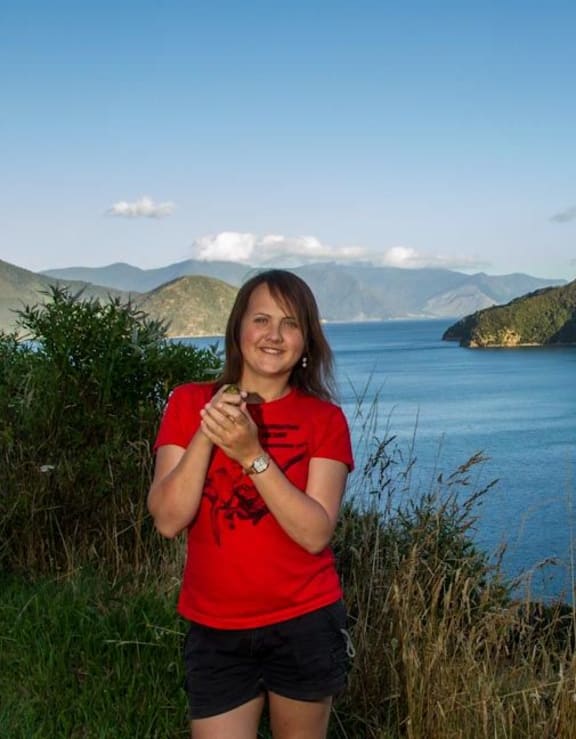
Postdoctoral fellow Zoe Grange, seen here on Maud Island, holding a bellbird. Photo: Thomas Burns
Zoe has developed a social network analysis – “a bit like facebook for takahe” – to explore connections between populations, and she found that breeding centres act as hubs for the bacteria.
When you’re moving a takahe from one population to a very distinct other location, this could be influencing what goes on with them. Could they be exposed to bacteria which could potentially be pathogenic?
Zoe Grange, Massey University
Megan says the coccidia parasite, which reproduces in the birds' gut cells, is of concern because it can cause disease in other tissues. “In kiwi, we do see it affecting kidney cells as well, and in some cranes overseas they see it through lots of tissues in the body. One of the important bits is to find out what it does to the takahe because these very high levels in some of these birds must be doing something.”
The team works closely with the takahe recovery team at the Department of Conservation to see why the Burwood Bush population has such high counts.
Brett Gartrell says it could be due to the intensive management of the birds and the fact that they are on the same ground over and over again.
"That’s what we see with the kiwi, it’s the young kiwi in creches that are most affected by this parasite. In the way we manage this we’ve tipped the conditions in favour of the parasite rather than the host, and we think that’s maybe what’s going on with the takahe at the Burwood Bush breeding site.”

